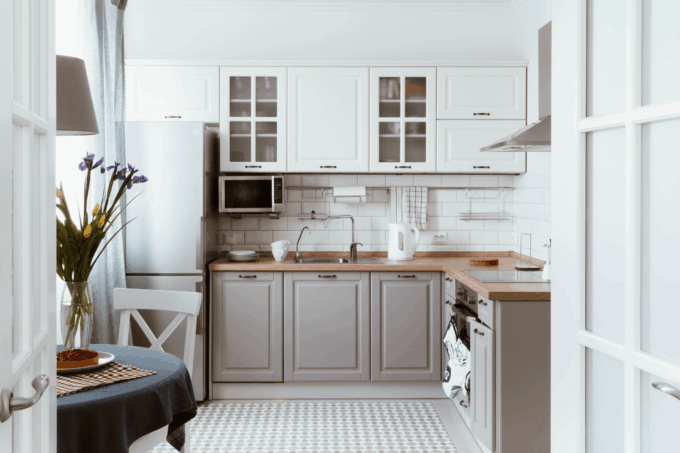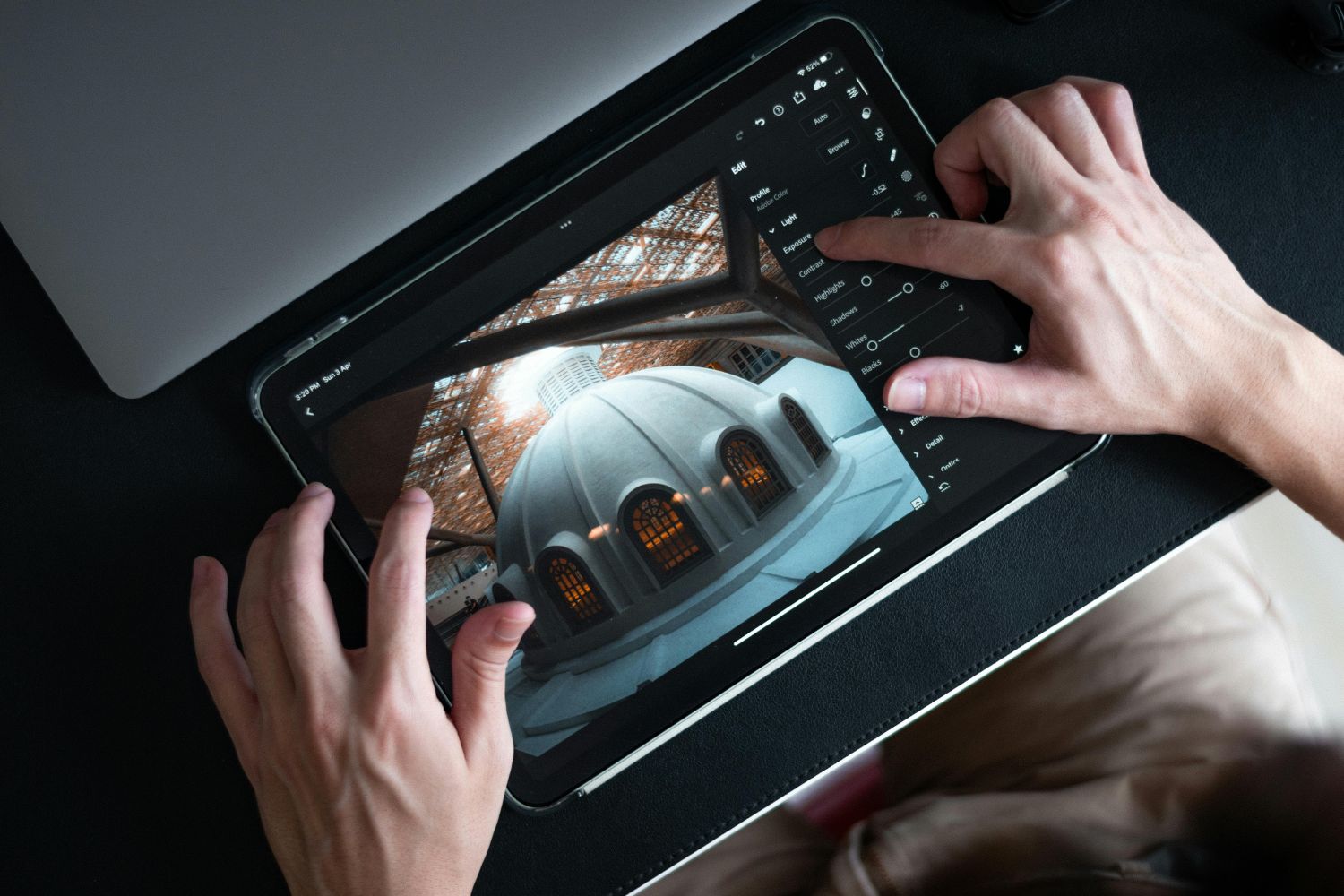- Home
- Articles
- Architectural Portfolio
- Architectral Presentation
- Inspirational Stories
- Architecture News
- Visualization
- BIM Industry
- Facade Design
- Parametric Design
- Career
- Landscape Architecture
- Construction
- Artificial Intelligence
- Sketching
- Design Softwares
- Diagrams
- Writing
- Architectural Tips
- Sustainability
- Courses
- Concept
- Technology
- History & Heritage
- Future of Architecture
- Guides & How-To
- Art & Culture
- Projects
- Interior Design
- Competitions
- Jobs
- Store
- Tools
- More
- Home
- Articles
- Architectural Portfolio
- Architectral Presentation
- Inspirational Stories
- Architecture News
- Visualization
- BIM Industry
- Facade Design
- Parametric Design
- Career
- Landscape Architecture
- Construction
- Artificial Intelligence
- Sketching
- Design Softwares
- Diagrams
- Writing
- Architectural Tips
- Sustainability
- Courses
- Concept
- Technology
- History & Heritage
- Future of Architecture
- Guides & How-To
- Art & Culture
- Projects
- Interior Design
- Competitions
- Jobs
- Store
- Tools
- More
Best Tablet Models for Architects in 2024: Top Picks for Design and Portability

Choosing the right tablet can make a world of difference for architects. With the rapid advancements in technology, 2024 brings an array of powerful tablets designed to cater to the unique needs of our profession. Whether it’s sketching out initial concepts, reviewing detailed blueprints, or presenting polished designs to clients, the best tablets seamlessly blend performance and portability.
In this article, we’ll explore the top tablet models for architects in 2024. We’ll highlight key features like processing power, display quality, and stylus support that are essential for our creative and technical tasks. Let’s dive in and find the perfect tool to elevate our architectural workflow.
Architects rely on tablets for various professional tasks.
Table of Contents
Toggle2026 Trends & Real Use Case: How Architects Are Actually Using Tablets in Daily Workflow
As we move beyond 2024, tablet usage among architects is no longer limited to sketching and basic annotations. 2026 trends point toward tablets becoming central workflow devices rather than secondary tools. With improved pen latency, desktop-level apps, and seamless cloud synchronization, architects increasingly rely on tablets for early-stage concept development, client presentations, and even on-site coordination. The best tablet models are now chosen not only for portability, but for how efficiently they integrate into BIM workflows, AI-assisted design tools, and cross-platform collaboration environments.
A real use case seen in mid-size architecture studios highlights this shift clearly. Instead of starting projects on paper or desktop CAD tools, architects begin with tablets during client meetings—sketching spatial ideas live, annotating references, and exporting concepts directly into design software. This before / after comparison shows a significant reduction in revision cycles: before, early concepts took days to formalize; after tablet-first workflows, the same process happens within hours. Tablets are no longer just “nice to have” devices—they are becoming strategic design tools that influence speed, clarity, and communication quality.
Looking ahead, the best updated tablet choices for 2026 will be those that balance raw performance with ecosystem compatibility. Architects should prioritize devices that support advanced stylus input, multitasking, external display workflows, and long-term software updates. Choosing a tablet without considering these common mistakes—such as focusing only on screen size or ignoring software optimization—can limit its real-world value. In short, tablets are evolving from digital sketchbooks into portable design studios, reshaping how architectural ideas are created and shared.
Key Features Architects Need in Tablets
Architects rely on tablets for various professional tasks. Important features aid in enhancing productivity and creativity.
Performance and Speed
High performance ensures smooth functioning of demanding applications like CAD software, 3D modeling tools, and rendering engines. Processors with multiple cores, like Apple’s M1 or Qualcomm’s Snapdragon 8cx, provide necessary speed. Ample RAM, at least 8GB, enables efficient multitasking, ensuring fluent operation of design programs and resource-intensive tasks.
Display Quality and Size
A high-resolution display helps in viewing details of architectural designs. Screens with 2560×1600 pixels or higher, like those found in iPads or Samsung Galaxy Tab S models, enhance visual clarity. Size matters too, with larger screens, 12 inches or more, providing better workspace for drawing and reviewing blueprints. OLED and Liquid Retina displays with accurate color reproduction benefit tasks requiring color precision.
Stylus and Touch Precision
Precise touch and stylus input are vital for drawing and noting details. Styluses, like the Apple Pencil or Samsung S Pen, offer high levels of sensitivity and pressure detection for nuanced sketching. Low latency ensures immediate response, making interactions smooth and natural. Additional features like palm rejection enhance usability for lengthy drawing sessions.

Top Tablet Models for Architects in 2024
Architects in 2024 need tablets that combine power, precision, and portability. Here are the top models that meet these criteria.
Apple iPad Pro
The Apple iPad Pro excels in performance with its M1 chip, ensuring smooth multitasking and handling of graphic-intensive apps. Its Liquid Retina display has a resolution of 2732×2048 pixels on the 12.9-inch model, providing sharp and vibrant visuals. The iPad Pro supports the Apple Pencil 2, which offers high sensitivity, pressure detection, low latency, and palm rejection—vital for precision in drawing and design. These features make the iPad Pro a top choice for architects requiring a robust and versatile tool.
Pros:
• Performance: Powered by the M2 chip, the iPad Pro offers unparalleled speed and efficiency, capable of handling complex architectural software.
• Display: The 12.9-inch Liquid Retina XDR display provides stunning color accuracy and brightness, perfect for detailed design work.
• Apple Pencil: With the second-generation Apple Pencil, you get a seamless drawing experience with low latency and precision.
Cons:
• Price: High-end model prices can be steep.
• iOS Limitations: Despite its power, some users might find iOS restrictive compared to full desktop operating systems.

Microsoft Surface Pro 9
The Microsoft Surface Pro 8 merges laptop performance with tablet versatility. It features the 11th Gen Intel Core processors, delivering impressive speed and efficiency. The 13-inch PixelSense Flow Display with 2880×1920 pixels ensures clear and crisp images. For stylus input, the Surface Slim Pen 2 offers excellent pressure sensitivity, low latency, and tactile feedback, simulating a real pen experience. These aspects make the Surface Pro 8 an ideal option for architects who need a powerful hybrid device.
Pros:
• Versatility: Functions both as a tablet and a laptop, offering the flexibility to switch between touch and type.
• Performance: Equipped with Intel’s 13th Gen processors, it can run full desktop versions of software like AutoCAD and Revit.
• Display: The 13-inch PixelSense Flow display is bright and color-accurate, ideal for design work.
Cons:
• Battery Life: Intensive use can drain the battery quickly.
• Price: Accessories like the Type Cover and Surface Pen add to the overall cost.

Samsung Galaxy Tab S8
The Samsung Galaxy Tab S8 stands out with its Qualcomm Snapdragon 8 Gen 1 processor, facilitating seamless multitasking and rapid processing. Its 11-inch Super AMOLED display with a resolution of 2560×1600 pixels delivers vibrant colors and deep contrasts. The tablet supports the Samsung S Pen, known for its high sensitivity, pressure detection, and low latency, ensuring accurate and efficient drawing. These characteristics provide architects with a reliable and capable device for various design tasks.

Samsung Galaxy Tab S9 Ultra
Pros:
• Display: The 14.6-inch Super AMOLED display is one of the best on the market, offering vibrant colors and deep blacks.
• Performance: Powered by the Snapdragon 8 Gen 2 processor, it handles multitasking and graphic-intensive apps with ease.
• S Pen: Comes with the S Pen included, which is highly responsive and perfect for sketching and note-taking.
Cons:
• Size: The large size might be cumbersome for some users.
• Android Ecosystem: While improving, the availability of professional-grade apps on Android is still behind iOS and Windows.

Wacom MobileStudio Pro 16
Pros:
• Precision: Known for its industry-leading pen technology, the Wacom Pro Pen 2 offers 8192 levels of pressure sensitivity.
• Performance: Built to handle demanding applications, it comes with Intel Core i7 processors and NVIDIA Quadro graphics.
• Display: The 15.6-inch 4K display is color-accurate and perfect for detailed work.
Cons:
• Weight: It’s heavier than most tablets, affecting portability.
• Price: It’s a significant investment, particularly for the high-end models.

Lenovo ThinkPad X1 Tablet Gen 4
Pros:
• Build Quality: Durable and robust, designed to withstand rigorous use.
• Performance: Features up to Intel Core i7 processors and can run full desktop software smoothly.
• Display: The 13-inch 3K display is sharp and vibrant, ideal for architectural visualization.
Cons:
• Battery Life: Moderate battery life compared to some competitors.
• Price: Accessories such as the keyboard and pen are sold separately, increasing the total cost.

Considerations for Choosing the Right Tablet
Selecting the right tablet can significantly impact an architect’s productivity. Several key factors influence this decision.
Operating System Compatibility
The operating system dictates app compatibility and user experience. iOS, Android, and Windows hold distinct advantages. iOS offers a seamless experience with apps like Procreate and Shapr3D. Android provides flexibility and diverse software options, crucial for multitasking. Windows ensures compatibility with full desktop software, essential for running architecture programs like AutoCAD and Revit.
Portability and Battery Life
Portability ensures we can take our work anywhere without hassle. A lightweight tablet less than 1.5 pounds enhances mobility. Battery life impacts our productivity on the go. Tablets with a battery life exceeding 10 hours, such as the Apple iPad Pro and Surface Pro 8, support long, uninterrupted usage.
Budget and Value for Money
Budget considerations balance cost and feature set. High-end models like the iPad Pro and Surface Pro 8 offer premium features at elevated prices. Mid-range options like the Samsung Galaxy Tab S8 provide a balance of performance and cost-efficiency. Evaluate our specific needs to determine the best value, ensuring we invest in a tablet that meets our professional requirements without overspending.

Common Mistakes When Choosing a Tablet for Architectural Design
One of the most common mistakes architects make when selecting a tablet is focusing solely on hardware specifications while overlooking software compatibility and workflow integration. A high-resolution display or powerful processor may look impressive on paper, but if the tablet does not smoothly support architectural apps, file formats, or multi-device workflows, its real value quickly diminishes. Another frequent issue is underestimating long-term usability—choosing a tablet without considering stylus precision, external display support, or update longevity often leads to limitations as project complexity grows. The best tablet models are those that balance performance, ecosystem support, and real-world architectural use rather than raw specs alone.
User Reviews and Feedback
User reviews and feedback give valuable insights into the performance and usability of tablets for architects in 2024.
Professional Architects’ Experiences
Professional architects emphasize the Apple iPad Pro’s unmatched integration with design apps like Procreate and AutoCAD. Many note how the M1 chip provides smooth multitasking during high-intensity projects. The iPad Pro’s portability and Apple Pencil 2 are frequently mentioned for enhancing precision and ease of use in sketching and modeling.
In contrast, architects using the Microsoft Surface Pro 8 highlight its versatility with Windows 11 and compatibility with a wide range of professional software. The 11th Gen Intel Core processors allow for seamless operation of software such as Revit and SketchUp. Architects appreciate the Surface Slim Pen 2’s haptic feedback, which mimics the feel of real drawing and adds a tactile dimension to digital input.
Samsung Galaxy Tab S8 users praise its vibrant display and efficient Snapdragon 8 Gen 1 processor. Several architects find the tablet’s lightweight build advantageous for on-site work. The Samsung S Pen’s low latency and responsiveness are frequently noted as ideal for intricate designs and quick edits.
Long-Term Reliability
Over the long term, the Apple iPad Pro receives high marks for its consistent performance and software updates. Users report minimal slowdowns and commend the device’s longevity, finding it a reliable tool year after year.
The Microsoft Surface Pro 8 is praised for maintaining robust performance levels over time, with user feedback highlighting its sturdy build and long-lasting hardware. Regular firmware updates from Microsoft help in keeping the device running smoothly.
The Samsung Galaxy Tab S8 also earns positive feedback for durability, with architects noting that it withstands the rigors of daily use. Regular software updates from Samsung contribute to sustaining performance levels and keeping security features up to date.

Conclusion
Choosing the right tablet enhances an architect’s workflow and productivity. Based on user reviews and expert feedback, the Apple iPad Pro, Microsoft Surface Pro 8, and Samsung Galaxy Tab S8 stand out in 2024.
The Apple iPad Pro excels due to its seamless integration with popular design applications like AutoCAD and Procreate. Our experience highlights exceptional multitasking capabilities which handle multiple complex tasks efficiently.
The Microsoft Surface Pro 8 is praised for its versatility and compatibility with professional software such as Adobe Creative Cloud and Revit. Running Windows 11, it offers a familiar desktop experience in a portable format.
The Samsung Galaxy Tab S8 impresses with its vibrant display and powerful processor. The responsiveness and speed of this device make drawing and rendering smooth.
All three models receive positive feedback regarding long-term reliability. Regular software updates contribute significantly to maintaining performance and durability.
Architects seeking the best tablet in 2024 should consider these models for their professional and creative needs.
- architectural design tablets
- architecture drawing tools
- Best Devices for Architects
- best drawing tablets
- Best Graphic Tablets
- Best Graphic Tablets for Students
- Best Tablets for Architects
- Concepts App
- digital drawing devices
- drawing tablets for architects
- drawing tablets for students
- Graphic Tablets for Architects
- Graphic Tablets for Students
- Hardware Suggestions
- iPad Pro for Architects
- Morpholio
- ProCreate
- professional drawing tablets
9 Comments
Submit your architectural projects
Follow these steps for submission your project. Submission FormLatest Posts
Architecture Meets Technology: Inside the Digital Construction Workflow
As architecture enters an era shaped by data, simulation, and digital collaboration,...
Best Tablets for Architects and Students in 2026: Performance, Drawing & CAD
In 2026, tablets have become essential tools for architects and architecture students,...
7 Powerful iPad Apps for Modern Landscape Architecture & Garden Design
In 2025, iPad-based workflows have become essential for landscape architects and garden...
How Virtual Architecture Is Redefining Design From Real Time Worlds to Built Impact
Discover how virtual architecture is redefining design from static sketches to immersive,...












This article gives a good overview of tablets for architects. It’s helpful to see the pros and cons of different models. I might consider the iPad Pro or Surface Pro for my work.
This article gives some basic info about tablets for architects. It talks about performance and features but doesn’t go into much detail.
The article gives a good overview of the tablets for architects in 2024. It lists important features and mentions different models, which is helpful. I think it’s interesting to see how technology is evolving.
I really enjoyed reading this article! It’s super helpful for architects like me. I love that it talks about the best tablets for our work. The details about each tablet’s features make it easier to choose one. Thanks for sharing!
This article has some useful information about tablets for architects. I think it’s good to know which models are recommended, but I don’t have a strong opinion about any of them.
This article is super helpful! I love how it explains what architects need in a tablet. The details about the iPad Pro and Surface Pro 8 are great. I can’t wait to choose the best one for my work!
This article is super helpful! I love how it explains the best tablets for architects. The features like display quality and stylus support sound amazing. I can’t wait to get one of these tablets for my work!
This article is very helpful for architects looking to buy a tablet in 2024. It explains important features like performance, display quality, and stylus support that we need for our work. I found the information about the iPad Pro and Surface Pro 8 very interesting, especially how they help with design tasks. The comparison of different models makes it easier to choose the right one.
This article is very helpful for architects looking for the best tablets in 2024. It explains important features like performance, display quality, and stylus support. I learned that tablets like the Apple iPad Pro and Microsoft Surface Pro 8 are great choices because of their powerful processors and high-resolution displays. The information about battery life and portability is also useful for professionals on the go.